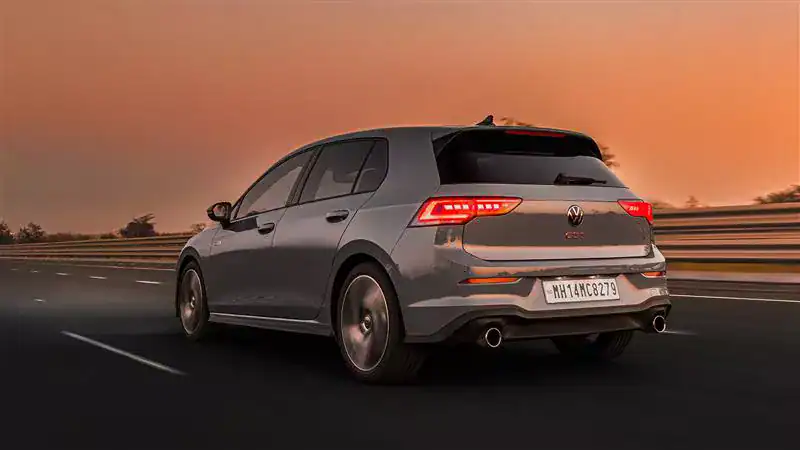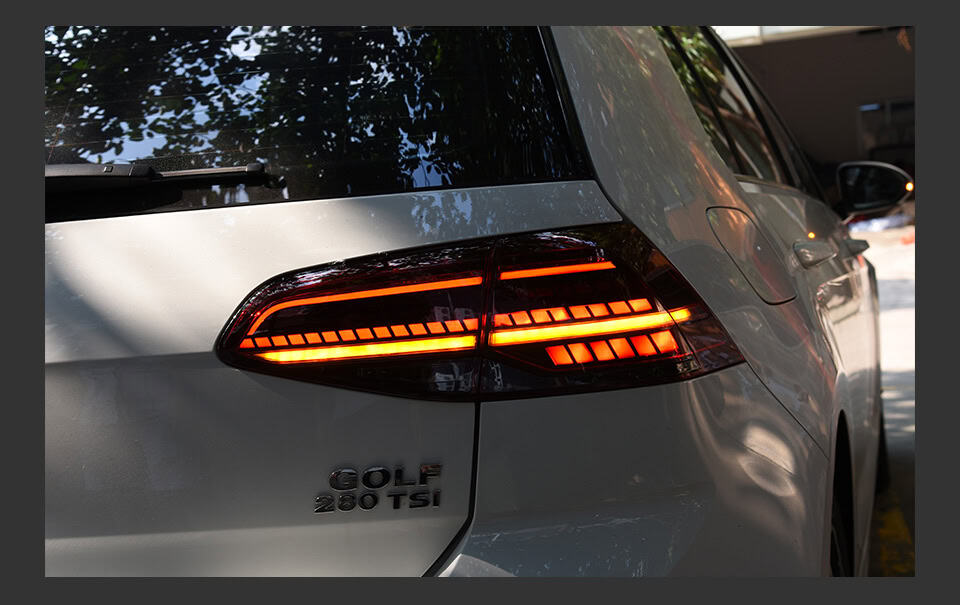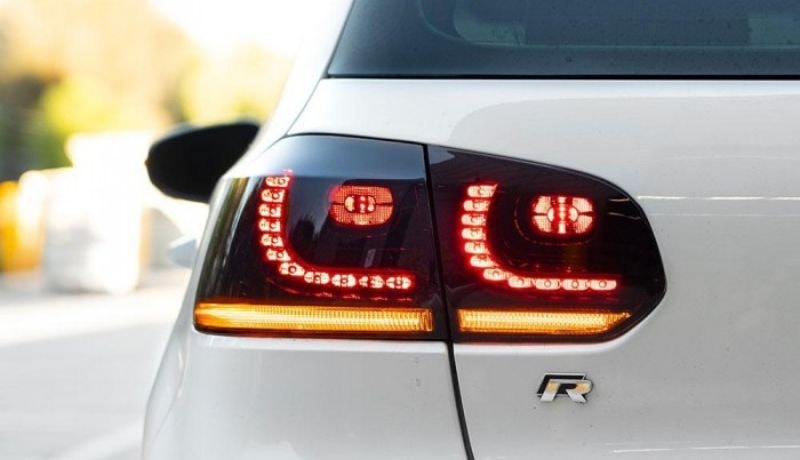Are you looking for a solution to drive in low light? In this blog post, you’ll explore the significance of car sidelights.
Using sidelights effectively can enhance visibility and minimize the risks of accidents. With 15 years of experience in manufacturing innovative vehicle lighting, we’ll share insight on using sidelights.
This guide is for you if you are unaware of why and how to use sidelights. So, let’s get into it.
What are Sidelights?

Sidelights, also called parking lights, are small lights on a car. They are positioned on the four corners of your vehicle. They are designed to improve your car’s visibility when it’s not dark enough. Unlike headlights, sidelights do not help you illuminate the road. Instead, they make your stationary or slow-moving car more noticeable to other drivers. It is a safety feature in low-light conditions to prevent accidents.
A sidelight is located near or within the same unit as your headlight. On illumination, sidelights emit a soft white glow that is not as intense as one that headlights emit. These lights are linked with your rear lights, including red tail lights and the back number plate. When sidelights are activated, the vehicle’s front and rear are illuminated.
When to Use Sidelights?
Sidelights are crucial for responsibly driving on the road. However, many drivers overlook them. The following points will show you when to use them:
Improving Visibility Without Extra Glare
Sidelights do not emit intense glare. However, they are suitable for helping other drivers to spot your vehicle. In low-light conditions, like dawn, dusk, or overcast weather, sidelights improve visibility without overwhelming others on the road. They also prevent creating harsh reflections.

Sidelight illumination is ideal for middle-ground scenarios between a strong glare and no lighting. They offer a subtle glow that prevents other drivers from distracting or visually strained.
These lights enable others to gauge important details about your vehicle. They can access your position on the road. In addition, it can help them judge your traveling speed and the vehicle you are driving. Moreover, sidelights on each corner allow them to determine the width of your car. It is useful while navigating narrow or crowded spaces. The visibility of sidelight promotes a safe and predictable driving environment.
Parking on The Road

Keeping the headlights on while parking your car on the road is not suitable. It’s essential to switch them off to prevent dazzling other drivers on the road. Sidelights are the best solution in such cases. They act as parking lights and make your car visible at night or in low-light situations. These lights also make your car more visible at night, preventing others from bumping into it.
In some countries, turning off the sidelights while parking on the road is illegal. The Road Vehicles Lighting Regulations 1989 mentions this act as an illegal act at night, and it can also lead to penalties. These lights allow other road users to see the vehicle, particularly in dark or poorly lit areas.
However, this law is not applied to vehicles all the time. Here are some specific situations when it is applicable:
- When your vehicle is parked on the road between sunset and sunrise.
- When you are using a road with a speed limit over 30 mph.
- When you have not parked your vehicle within a designated parking space.
These sidelights consume minimal power. This feature makes them the best solution for better visibility of your parked vehicle without draining the battery.
Lifesaving Backup In Case Headlights Fail
Driving without turning on the headlights in the dark is not permissible in most regions. However, there’s nothing you can figure out if your headlight bulb suddenly blows or fails while driving. Although they are not as bright as headlights, they can help you safely pull over or drive cautiously to a repair shop.
If only one or two headlights are working, don’t risk using them. They can misguide others, assuming you are using a bike instead of a car. Turning on sidelights in addition to headlights will offer a clearer visible outline of your vehicle’s size and position on the road.
Sidelights may not give you strong illumination like headlights, but they are sufficient to keep you safe. It is not the best solution for traveling in the dark. However, they are better than no light in an emergency.
Sidelights vs. Headlights
Knowing various types of car lights is crucial for safe driving. Headlights, front fog lights, rear fog lights, hazard warning lights, and sidelights are common types. Among these sidelights and headlights are the most prominent ones. Understanding the difference between the two can assist you in utilizing them better. Here are some differences between them:
| Aspects | Sidelights | Headlights |
|---|---|---|
| Purpose | Increase car’s visibility to other road users | Illuminate the road ahead |
| Brightness Level | Dim Light with 5-watt bulb | Bright light with 55 to 70-watt bulb |
| When to Use | Parking cars on roads, low-light areas | Night driving, poor weather |
| Replacement Role | Can be used in place of headlights in emergencies, but can’t replaced them | Can’t be used as a substitute |
Purpose
Sidelights are designed to offer clarity of a vehicle to road users in low-light conditions. These lights alert them about the presence of the car. With their glare-free illumination, they offer comfortable visibility. It prevents other drivers from distracting.

In contrast, headlights are meant to cast light on the road. They allow you to navigate the path. You can better see obstacles, other vehicles, pedestrians, and road signs. Effective use of headlights is necessary for your vision and alerting other road users.
These lights are essential for alerting others when approaching intersections or making turns on poorly lit roads. Your vehicle has different types of headlights for particular purposes.
- Dipped headlights are designed for night-time driving. They have stronger illumination than sidelights. However, they are not full-beam lights. These headlights are angled downwards to avoid blinding oncoming drivers.
- Full-beam headlights offer the highest brightness They are meant to travel on unlit stretches at night, motorways, and A-roads. You should use them when there is no light traffic.
Brightness Level
Sidelights use a small 5-watt bulb. They emit significantly low brightness that is adequate to access a vehicle’s position. However, it is not sufficient to light up the path. Their minimum glow also makes them ideal for making a stationary car noticeable in low lighting.
In contrast, headlights are much brighter than sidelights. These halogen bulbs operate at a wattage between 55 to 70 watts depending on their brightness. The higher-wattage bulb creates sufficient light to illuminate the road ahead.

When To Use The Light
Sidelights are used for highlighting your car when visibility is low. They allow road users to know about your vehicle in conditions where street lighting is adequate. It eliminates the need for intense headlights. Moreover, they are also crucial for parking your car in narrow or inadequately lit areas.
On the other hand, headlights are employed for driving in low visibility conditions. These lights provide you clarity of the road. It also enables other road users to spot your car.
Replacement Role
Sidelights can’t replace headlights. However, in emergencies when your car’s headlights are not operating, you can switch to sidelights. In contrast, using headlights instead of sidelights can be dangerous. The intense glare of headlights can overwhelm other drivers and lead to accidents.
Can You Use Daytime Running Lights (DRLs) as Sidelights?
In modern cars, daytime running lights are designed to improve a vehicle’s visibility to other road users in the daytime. These lights automatically activate when you start your car’s engine. They become dim or turn off when you switch on the headlights.
DRLs are quite similar to sidelights. However, they have some differences that distinguish the two types of lights. DRLs have higher brightness levels than sidelights. It means they are not suitable for dull weather. In addition, daytime running lights are not connected to tail lights. You can’t turn the lights on by just switching on them.
Sidelights and the Law
Almost all cars come with installed sidelights. However, some drivers may want to remove or replace them. In most regions, there are strict regulations regarding the use of sidelights. In many countries, including the United States, New Zealand, and Canada, only white or yellow sidelights are recommended. In the UK and Australia, it is compulsory to have white sidelight.
The Road Vehicle Lighting Regulations of 1989 outline the requirements for parking lights. According to these regulations, no vehicle should be parked on a road with speed limits over 30 mph between sunset and sunrise. You can only park your cars if their sidelights are lit and obscure.
In addition, it is compulsory in the UK for vehicles that are three years old to pass the MOT (Ministry of Transport) test. The vehicles undergo this test each year. This test outlines the minimum safety standards for any vehicle on the road.
To pass this test, your car must have four sidelights on each corner. They should be unobscured and function smoothly. In addition, they must be operated by a single switch. The switch must be within your reach. Moreover, the lights should be instantly illuminated without delay. Furthermore, the color of the front lights must be white, while that of the rear ones should be red.
Maintaining Sidelights

Maintenance of sidelights ensures optimal visibility. The following are some tips to maintain the sidelights of your car:
- Dirt and dust particles can accumulate over your sidelights over time. It can minimize their effectiveness. Regularly clean them with a soft cloth to wipe away dirt and debris from the lenses. You can also use a mild detergent for cleaning the lens.
- Regularly inspecting your sidelights enables you to evaluate their performance. It helps you avoid any unexpected issues while traveling.
- Damaged sidelight might fail to alert other drivers, leading to the risk of accidents. If you observe cracks or malfunctioning lights, replace them with new ones.
Common Side Light Indicator Issues and Troubleshooting
Several issues are linked to the use of side light indicators. Here are some common side light indicator issues and their solution:
- A common issue many car drivers experience is that the side light indicator fails to appear on the dashboard. It occurs when the bulb is blown. This issue is also caused by a faulty switch. You can fix it by replacing the bulb or the faulty switch.
- Sometimes, your sidelights flicker or get dim. It arises due to wiring issues or low battery power. Regular inspection and maintenance can resolve them.
Sidelight Safety Tips for Effective Driving

The following tips can boost your driving experience by ensuring the safety of sidelights:
- Sidelights are designed to be used in specific situations. It’s best to use them while parking your car or driving in an insufficiently lit area. Use them only in legally permitted situations. Avoid turning them on when it’s not necessary.
- Use sidelights in dimly lit areas. It will allow other road users to notice our vehicle.
- Regular maintenance is crucial for sidelights to function effectively. Check the condition of your car’s sidelights periodically. Replace any burnt or cracked bulb. Clean them to prevent dirt build-up on the lens to ensure maximum brightness when needed.
- Sidelights are not suitable for visibility in poor weather, like heavy fog, rain, or snow. In such cases, switch to dipped beams, which are brighter and better suited to illuminate the path.
Conclusion
To wrap up, sidelights are a crucial component of car safety. They boost your car’s visibility in low-light situations. You can also employ them in conjunction with other lights, like fog lights or hazard lights, to improve visibility. In addition, they are also necessary to make your vehicle noticeable while parking on the road. That’s the reason they are known as parking lights.
Moreover, maintain your sidelights to keep them in optimal condition. Regularly inspect them to detect any cracks, faulty connections, or dirt. Keep them clean for effective illumination. By following the guidelines in this article, you can ensure that you’re using your sidelights safely and effectively. So, pay attention to the sidelight usage and contribute to a safer driving experience for everyone on the road.
Get in Touch with Carlightvision Today for Bulk Orders and Premium Sidelights Solutions!
Ready to upgrade your car lights? Purchasing reliable sidelights is necessary for optimal performance and effective illumination. Carlightvision, a leading name in car light manufacturing, has 15 years of experience in creating innovative lighting solutions for vehicles.
We cover bulk orders by creating millions of products monthly. Download our catalog to learn more about us. Explore our lights and contact us for inquiries and free samples.




